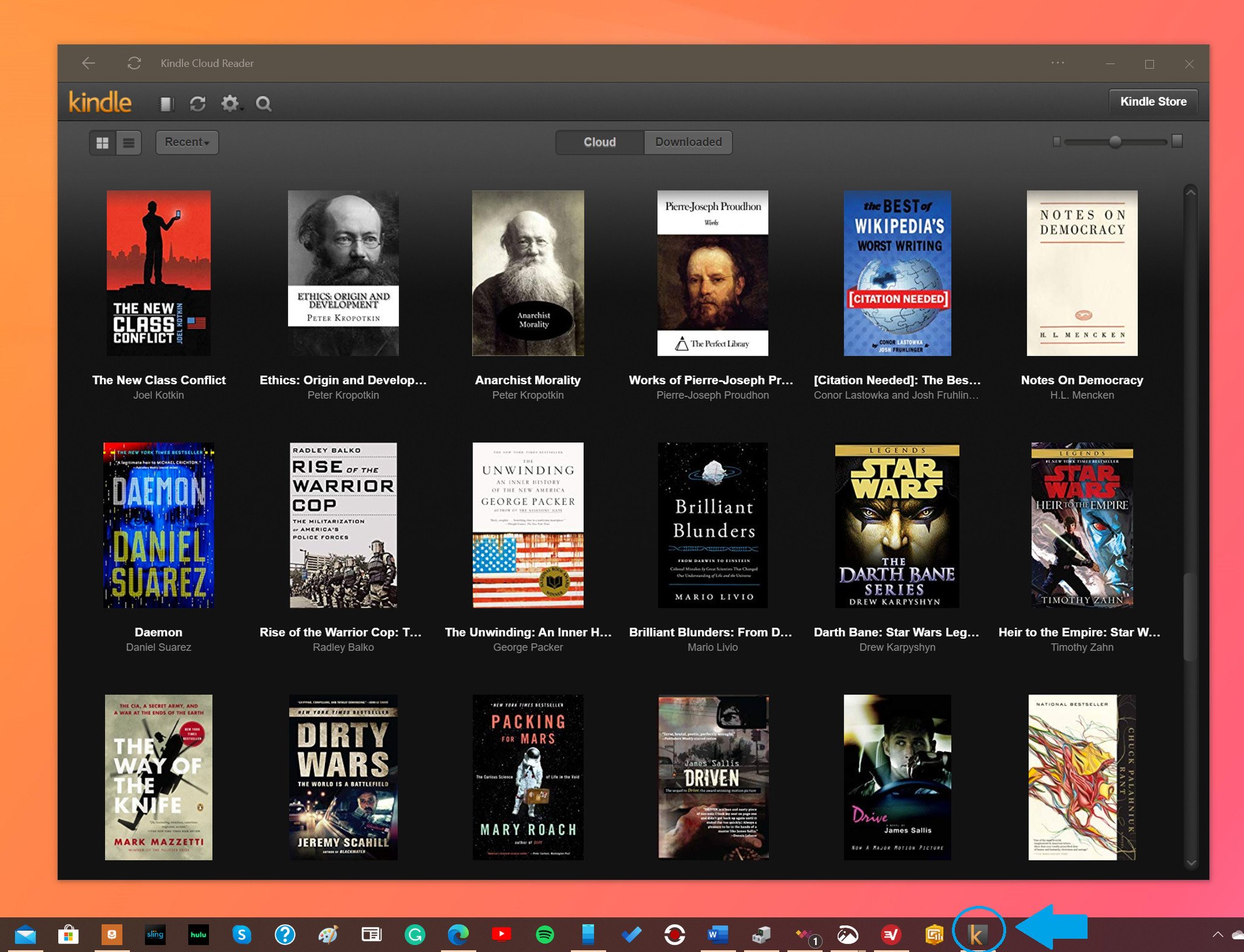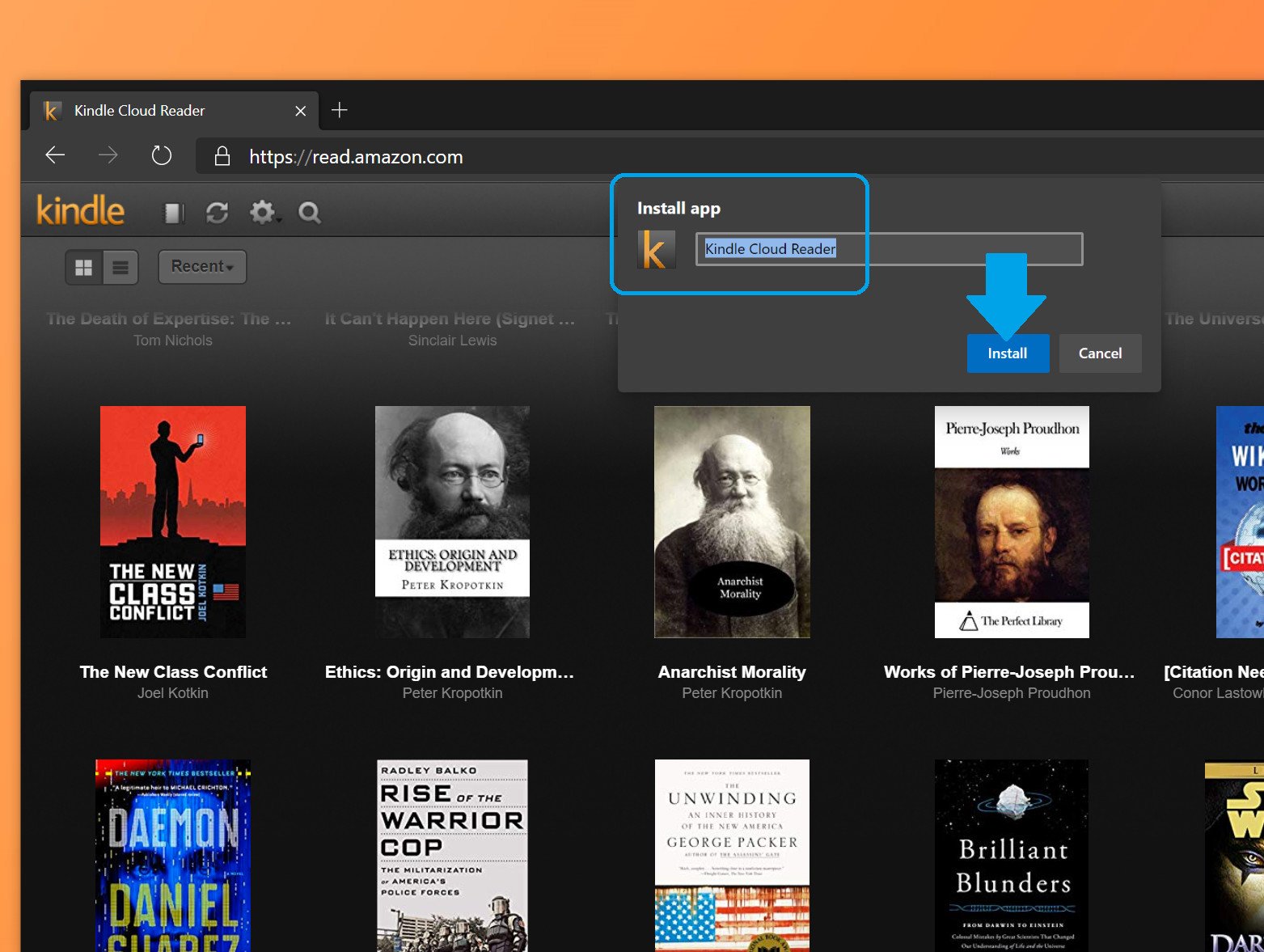How to read Kindle books using the new Microsoft Edge for Windows 10
Need a Kindle reader for your Surface Go or Windows 10 PC? Using the Kindle Cloud Reader and the new Microsoft Edge will make your day.

Amazon's eBook Kindle service has long been treated as a second-class citizen on Windows. For a few years, there was a Store app for Windows 8 devices, but that was pulled back in October 2016. There's also a "classic" desktop app, but it's been criticized as slow and clunky.
Luckily, there is a simple solution that works better than expected in the new Microsoft Edge browser: Kindle Cloud Reader.
Here's how it works and how to get it.
Kindle Cloud Reader: What is it?

Amazon's Kindle Cloud Reader is, at its heart, a simple web app that accesses your Kindle library. It's officially released as a browser plugin for Google Chrome (this extension, however, doesn't work in the new Edge for whatever reason).
The web app gives you access to all your online Kindle books and offers many settings and features, including:
- Customize your reading experience by choosing font size, text color, background color, number of reading columns, and more
- Create and edit notes, highlights, and bookmarks
- Whispersync technology automatically syncs your furthest page read, notes, and marks across devices, so you can start reading in your browser and pick up where you left off on your Kindle or any device with the Kindle app installed
- Search inside the book to find a topic, character, or section you want to revisit
- Look up word definitions and listen to how they are pronounced (available for English only)
- Shop the Kindle Store for millions of Kindle books, including new releases and best sellers
- Your current book is automatically made available for offline use, and you can choose to save a book for reading offline at any time
- Receive automatic software updates without the need to download new software
But really, the most significant and useful features come down to three things: (1) Support for offline reading, (2) Dark mode, and (3) Portrait mode.
Kindle Cloud Reader: How to get it
Installing Kindle Cloud Reader in the new Edge browser is simple and is the same method for installing any website as an app, including Disney+.
All the latest news, reviews, and guides for Windows and Xbox diehards.
Note: You may want to whitelist read.amazon.com in any adblocker extension you are using. Otherwise, your Kindle library may not display correctly. The same applies to the Night Eye extension.
- Navigate to read.amazon.com in the new Edge browser.
- Log into your Amazon account.
- Select the browser menu '…' in the upper right corner in Edge.
- Navigate to Apps, and select Install this site as an app.

- Name the app if you want and hit Install.

The Kindle Cloud Reader "app" will now show in the Windows 10 app menu as expected. From there, you can right-click on it to pin to the Start menu or send it to the Task Bar for quick access. Right-clicking on the icon also lets you uninstall the "app" if you no longer need it.
You now have a Kindle reader app!

Using the Kindle Reader App on Windows 10 and Microsoft Edge is quite good. Because it's a web shortcut, it takes up just a few kilobytes of information (versus the 54MB .exe installer for the desktop reader).
To download your books for offline use, right-click on any book and select Download and Pin from the menu. Your books will be put into a separate tab called "Downloaded," which can be accessed when your PC is in Airplane mode (the books will sync your reading position when you are back online).

There are limitations to the Kindle Cloud Reader app. Expressly, touch support is limited to mostly going forward and backward in the book (page turning). While there are advanced features for tuning fonts and taking notes, you'll need to use the keyboard and mouse pointer to make those changes. There also doesn't seem to be a way to make it full screen, so you'll see the Windows taskbar.*
*Correction: As noted in comments you can make it full screen. Simply "tap the three dots on the task bar in the upper right corner and the drop down menu has the double arrow to trigger full screen. To get out of full screen with touch, just press in the middle of the page and hold your finger there until an X in a circle drops down from the top, hit it, and out of full screen." Thanks, bigbradbad, for the tip!
Overall, using the Kindle Cloud Reader on the Surface Pro X and Surface Go has been quite satisfying. Tossing the reader into the dark mode and hitting the pinned icon is fast, and the "app" is quite fluid.
While I'd still prefer Amazon to make a proper app with support for inking and the Microsoft Store, this is a reliable alternative for those who don't want to lug around a Kindle reader (or forgot to pack one).
The new Microsoft Edge is available now on Windows 7, Windows 8, Windows 10, and macOS. Microsoft Edge is also available on Android and iOS too.
Further reading and information on Edge

Daniel Rubino is the Editor-in-chief of Windows Central. He is also the head reviewer, podcast co-host, and analyst. He has been covering Microsoft since 2007 when this site was called WMExperts (and later Windows Phone Central). His interests include Windows, laptops, next-gen computing, and wearable tech. He has reviewed laptops for over 10 years and is particularly fond of 2-in-1 convertibles, Arm64 processors, new form factors, and thin-and-light PCs. Before all this tech stuff, he worked on a Ph.D. in linguistics, performed polysomnographs in NYC, and was a motion-picture operator for 17 years.


